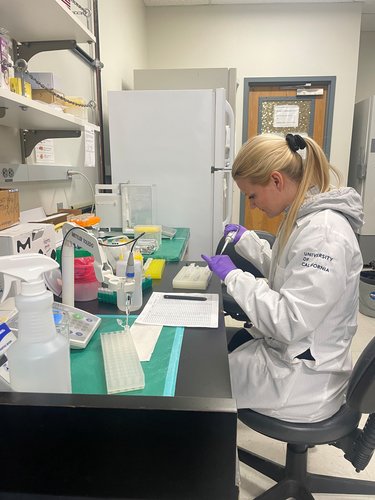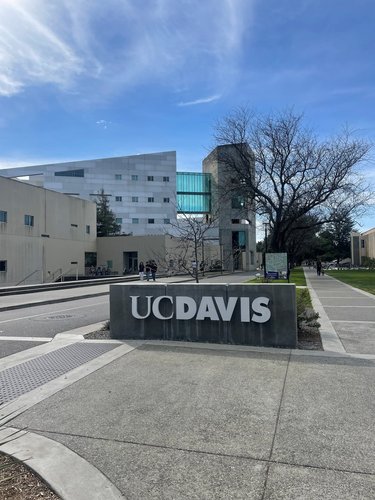The microbial mystery: exploring bacteria in inflamed tissues
By Shaila Ann Sigsgaard
Stine Karstenskov Østergaard, who is a PhD student and holds a master's degree in biotechnology, is a member of the Nutrition Pillar within the PIG-PARADIGM project. She tells us that her research is centered on the bacterial populations present in the intestinal tissues of patients suffering from chronic inflammatory bowel diseases (IBD).
-The primary objective of my work is to investigate the differences between inflamed and non-inflamed tissues and to determine whether inflammation is caused by the bacteria or if the inflammation itself induces changes in the bacterial populations.
Stine Karstenskov Østergaard’s PhD study is structured around three main objectives:
Mapping bacterial populations
- The first goal is to map the bacterial populations in both inflamed and non-inflamed tissues, she explains.
This involves understanding why inflammation occurs in certain areas of the intestine and not in others, and whether disease severity is linked to bacterial presence, she explains. This aspect of her research addresses the classic "chicken and egg" question in microbiology: does inflammation cause changes in bacterial populations, or do changes in bacterial populations cause inflammation? This information is essential for the research in pigs, which is planned in parallel with the human study, Østergaard points.
New methods and pipelines
-Given the lack of existing methods to adequately study these bacterial populations, I have also developed new methodologies and pipelines as my second objective.
This includes a pipeline for analyzing bacteria using 16S rRNA gene amplicon sequencing, she says. Østergaard has also worked on developing new metagenomic assembly approaches to analyze the low bacterial fraction of biopsies, leveraging environment-specific databases for high-resolution analysis. In simpler words, she has been working on creating new methods to study the small amounts of bacteria found in tissue samples and uses special databases that are tailored to specific environments to get very detailed results.
She explains that her research not only advances assembly strategies but also defines appropriate alignment thresholds to extract meaningful insights from the limited bacterial data.
-My work improves the study of bacteria in low-biomass samples, helping us understand their functional roles e.g. their roles in oxidative stress and antimicrobial resistance better, she adds.
Parallel exploration in human patients and pigs
-My third objective involves a comparative study between humans and pigs. This research aims to identify similarities in the microbiome between the two species through comparable analyses on pigs. This could potentially provide the information needed to induce experimentally controlled inflammation in pigs, making this kind of research more sustainable, ethical, and cost-effective, she stresses.
Østergaard emphasizes that this 'tandem' study is a significant part of her PhD, as it seeks to validate findings across different species.
Østergaard has recently visited two PIG-PARADIGM collaborative participants in the United States, Maria Marco and Caroline Slupsky who are renowned for their expertise in their fields. In Slupsky's lab, she was focusing on metabolomics using quantitative NMR to understand the products produced by the bacteria in the intestine. In Marco's lab, she was learning new methods to study epithelial cells and intestinal permeability. These collaborations aim to provide insights into how specific bacteria thrive in inflamed tissues and their potential to infect epithelial cells.
Østergaard's research not only contributes to the understanding of bacterial roles in IBD but also has broader implications for microbiology and biotechnology. The methodologies she has developed are being implemented in the PIG-PARADIGM project and are already beneficial to other research areas.
Østergaard's PhD is expected to be completed by February 2026.
Explainer: 16S rRNA gene amplicon sequencing is a way to find out what kinds of bacteria are in a sample. Scientists take a sample, extract the DNA, and then look at a specific gene (16S rRNA) that all bacteria have. By reading the DNA sequence of this gene, they can tell which bacteria are present and how many different types there are.
Stine Karstenskov Østergaard
PhD Student
Department of Chemistry and Bioscience
Aalborg University
Research Topic: To utilize a multi-omics approach to investigate local changes to the intestinal microbiome in patients diagnosed with ulcerative colitis (UC) exploring the connection between inflamed tissue and dysbiosis
Email: skoe@bio.aau.dk



